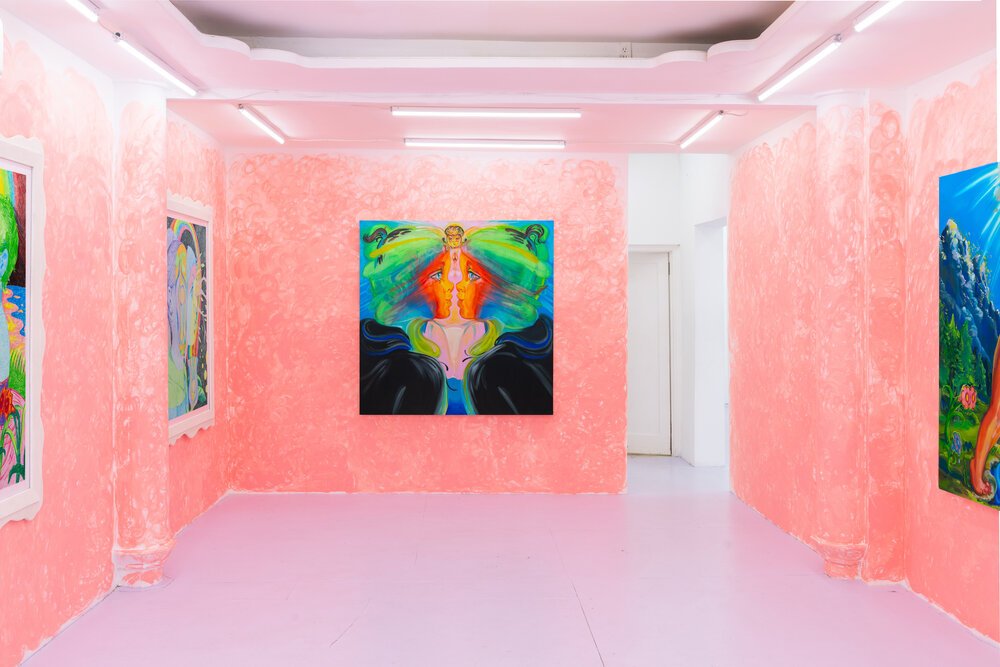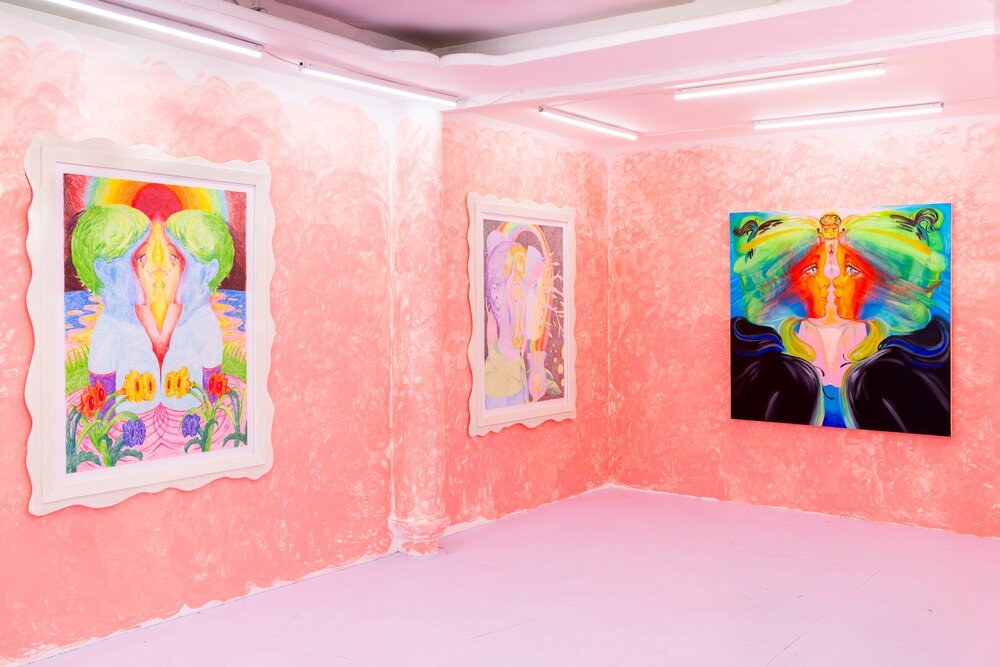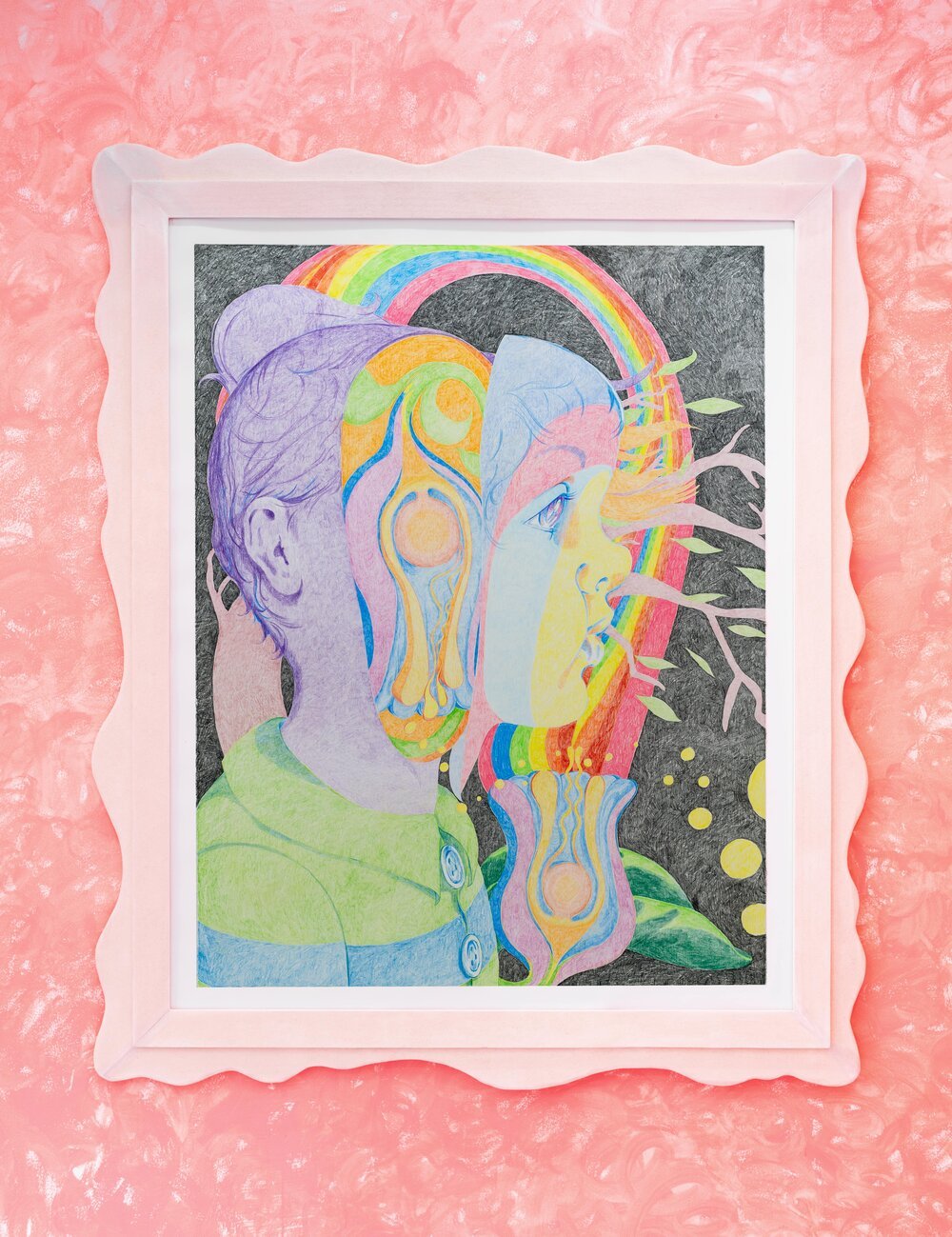Haley Josephs
Paintings and Drawings for Childhood’s End
March 1 - April 19, 2020
Jack Barrett is pleased to present Paintings and Drawings for Childhood’s End, Haley Josephs’ second solo show with the gallery. As the title suggests, the show features a new body of work presented in both mediums—a first for the artist. As the title also suggests, the works are both celebratory and inauspicious.
Paintings and Drawings for Childhood’s End consists of three paintings and several framed drawings placed on freshly painted, pink walls. The artist has hand-painted the gallery walls using sanitary pads and two hues of pink paint. The circular application of paint creates an ethereal, cloud-like landscape reminiscent of the womb.
Paintings and Drawings for Childhood’s End marks a departure from innocence and a transition to maturity, a stage of life that is both lamented and celebrated. The works in this show represent an act of rejoicing, the fleetingness of life in the physical world, and honoring the departed and their lingering presence. The artist’s intention is to celebrate the beauty present in every ending as it transforms into a new beginning. Paintings and Drawings for Childhood’s End shows a variety of transitions into passages unknown—that of birth and death, childhood and adulthood—the line between these places is blurred. The characters presented are neither here nor there, they exist in a timeless place where known and unknown merge.
The worlds depicted in Josephs’ new paintings and drawings present dream-like realities. While the figures in past works have often been situated in rural, naturalistic settings, the figures in Josephs’ new works take a more surrealist turn, floating or doubled in florally-adorned, imagined worlds. The doubled figures in these works suggest a mirroring of worlds that exist simultaneously—as above, so below—either one person or two beings, interchangeable. The painting One and Many Are the Same, and its precursor, the drawing Hand on the Grindstone, Heart on the Flower, Eye on the Light, show two bodies, mirrored. The angelic or uterine form in these works creates an entry point for the figures and the viewer—a passage into womanhood, into death, into transformation. The detailed flowers present throughout these new works are yet another symbol of fertility and the essential change undergone by these young women at Childhood’s End.
The entirety of this exhibition was created with the artist’s late sister in mind and heart.
Haley Josephs One and Many Are the Same, 2019 Oil on canvas 60 x 60 inches
Haley Josephs There Lives in Me an Image of All That I Should Be, 2019 Oil on canvas 60 x 60 inches
Haley Josephs Into Everything Unseen, 2020 Colored pencil on paper 50 x 38 inches
Haley Josephs Hand on the Grindstone Heart on the Flower Eye on the Light, 2020 Colored pencil on paper 50 x 38 inches
Haley Josephs Backyard, 2020 Colored pencil on paper 50 x 38 inches
Haley Josephs A Depiction (Transition, Death, Rebirth), 2019 Mixed media on paper 50 x 38 inches
Haley Josephs November 8th, 2013-2019 Mixed media 10 x 8 inches

















